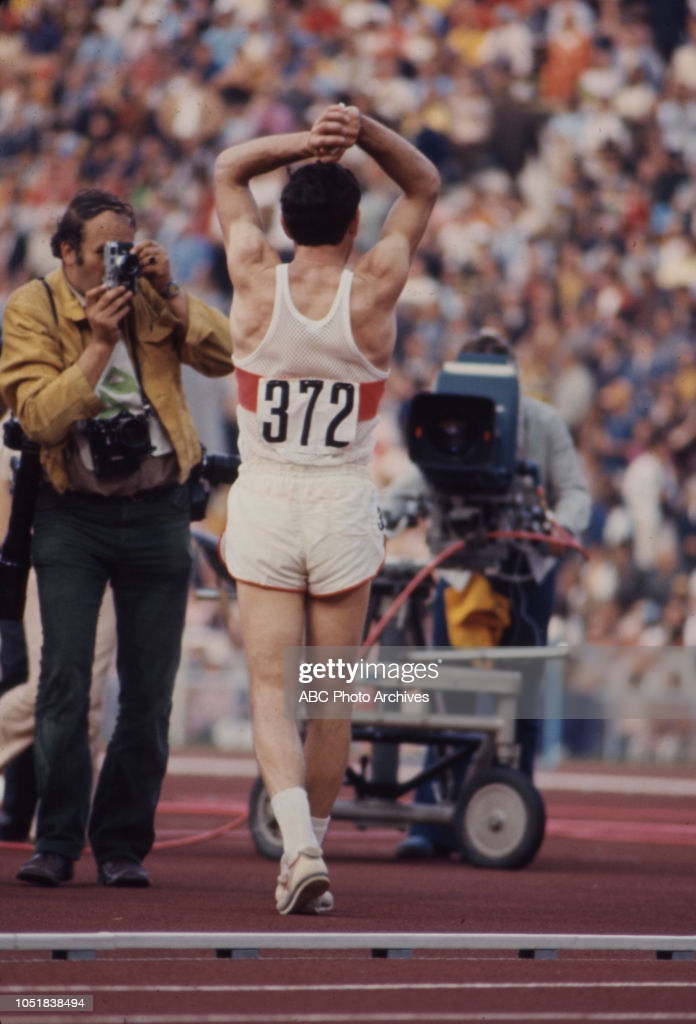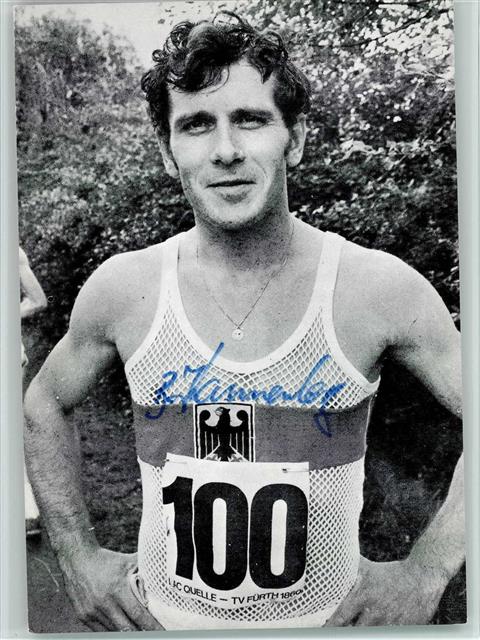Unfortunately, also today January 14, 2021 begins with sad news.
I received at 10 in the morning from my old friend of athletics, Dieter Massin (GER) the sad news that Bernhard “Bernd” Kannenberg died last night in a hospital in Munster (GER). He was one of the great names of race walking of the Federal Republic of Germany when the two Germanys were still separated.
Bernd Kannenberg was born on August 20, 1942 in Königsberg, East Prussia. Only in 1969, at the age of 27, did he start walking through a military march. Only one year later, he took part in the German championships for the first time. In his relatively short career from 1970 to 1976 he dominated the national competition and was able to celebrate a total of ten German championship titles over 50 kilometers, 20 kilometers and a 10,000 meter track. He started for TSG Füssen and 1. FC Nürnberg, but later wore the LAC Quelle Fürth shirt.
He linked its name to the victory of the 1972 Munich Olympic Games in what was certainly not a lucky Olympics for the Organizing Committee, while it was for him that in three years since he started walking he had come to the dream of a life of all athletes: the Olympic victory.
LOC had to undergo the incursion into the Olympic village of Arab guerrillas who in an attempt to free 234 Palestinian guerrillas and two members of the Rote Armee Fraktion (Andrea Bader and Ulrike Meinhof) stormed the Israeli building, killed two and held nine others hostage.
The German leatherheads intervened when the plane made available by the German government departed and it was a massacre; the toll was tragic, the nine hostages died, five fedayn, a policeman and the pilot who, seriously injured, died shortly after.
But it was not over. Later (on 29.10.1972) three Black September armed guerrillas hijacked a Lufthansa plane and threatened to blow it up with the twenty people on board. To avoid the massacre, those responsible for Black Tuesday in Munich were released.
The Games were assigned to Munich on April 26, 1966, and this massacre thwarted the perfect organization that had been set up.
We remember that race.
Soldatenko, the European Champion, and Kannernberg, who had set the fastest time ever at the beginning of the year in 3:52:45 were the favorites and their battle for gold was expected.
Kannenberg took the lead from the start and Soldatenko stayed with him up to 35km before breaking away, while the Mexico City winner, Hohne, already at 10km. he was two minutes late.
In third position at 20 km was the Soviet Sergey Grigoryev who was 1:26 behind the leaders, but was disqualified shortly after the 25 km.
The American Larry Young had started with a slow pace, as he had done in 1968, but later after his acceleration towards the middle of the race, he had gone from 11th position of the 10Km to the 3rd position of the 30Km. So he repeated the bronze of Mexico City with the best time ever for the USA.
The mark of the winner Kannenberg was the third fastest time ever it was the third time ever (3:56:11.6) and it was the first under 4:00:00 of the Olympic Games. Soldatenko with his performance placed 5th on the all time list on the 50km.
The biggest loser was Christoph Hohne, the winner four years earlier. On one of his very rare negative days he finished in 14th position with a mark of 4:20:44.
Subsequently in 1974 at the European Championships in Rome he competed in the 20km, but was beaten for only 8 seconds by Golubniciy and the same result he obtained in 1975 in the 20km World Cup in Le Grand Quevilly, FRA when only 9 seconds separated him from victory which went to Karl-Heinz Stadtmuller (DDR).
His duels with Vittorio Visini
For the Italians, his duels with Vittorio Visini, who at the time was our most accredited walker on the 50km, were memorable.
In particular, we remember the one on the Nerviano (ITA) track on 16.11.1975 when Kannenberg set the world record on the distance of 50,000m track walk (125 laps) on a cold day and in the pouring rain, with a time of 3:56:51.4 and Visini obtained the Italian record in 4:08:09.6.
The photos in the newspapers of that day are a beautiful example of that technique that permeated the two contenders.
Kannenberg's consistency in that race was impressive:
- 5km: 23:14
- 10km: 46:28 (23:14)
- 15km: 1:09:53 (23:25)
- 20km: 1:33:12 (23:19)
- 25km: 1:56:38 (23:27)
- 30km: 2:20:06 (23:28)
- 35km: 2:44:01 (23:55)
- 40km: 3:07:52 (23:51)
- 45km: 3:32:07 (24:15)
- 50km: 3:56:51.4 (24:44.4)
Two years earlier the two had put on a show on the streets of Sesto San Giovanni, when in the historic 30km Bernd (2:27:22) had beaten Vittorio by just 13" (2:27:35).
The 30km took place over seven laps and Kannenberg was always in the lead and with him the other Italian Armando Zambaldo. During the 5th lap Visini caught up with Zambaldo, but Kannenberg had forced the pace and his advantage was close to 30".
In the last two laps Kannenberg's advantage is significantly reduced as Visini, pushed by the cheering of the public of Sesto, crumbles the advantage from 30" to 20" and finally catch up Kannenberg at the beginning of the last lap. Visini tries at this point to detach Kannenberg, but the German is sufficiently fresh and supports the action of the Italian.
It is then the Olympic Champion who seeks victory, but Visini holds up well.
A final sprint is expected, when Kannenberg less than 1km from the finish launches the decisive attack to which the generous Visini is unable to respond.
The third Heinrich Shubert will arrive more than 5 minutes late (2:32:46).
History repeated itself on 1.5.1974 with a slightly different result: Kannenberg victorious in 2:30:34 and Visini second in 2:31:15.

